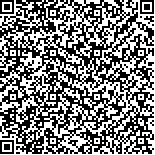| 引用本文: |
敖慧豪,付梦雅,谢冬梅,朋汤义,吴德玲,韩燕全.基于指纹图谱和网络药理学的苍耳子质量标志物预测分析[J].湖南中医药大学学报,2023,43(3):483-492[点击复制] |
|
| |
|
|
| 本文已被:浏览 2215次 下载 1577次 |
| 基于指纹图谱和网络药理学的苍耳子质量标志物预测分析 |
| 敖慧豪,付梦雅,谢冬梅,朋汤义,吴德玲,韩燕全 |
| (安徽中医药大学第一附属医院/国家中医药管理局中药制剂三级实验室/中药复方安徽省重点实验室/现代药物制剂安徽省工程技术中心, 安徽 合肥 230601;安徽中医药大学, 安徽 合肥 230031) |
| 摘要: |
| 目的 基于指纹图谱和网络药理学预测苍耳子质量标志物,为其质量控制和药效研究提供依据。方法 选择10批不同产地苍耳子饮片,采用超高效液相色谱系统Waters Acquity UPLC H-Class建立其UPLC指纹图谱,通过对照品指认确定其共有峰并初步预测其候选Q-Marker;运用网络药理学构建“核心成分-靶点-通路”网络,进一步预测苍耳子Q-Marker及核心靶点,再用分子对接方法预测分析苍耳子Q-Marker生物活性。结果 建立了10批苍耳子饮片的指纹图谱,确认了18个共有峰,通过苍耳子对照品指认了其中8个峰,分别为原儿茶醛、新绿原酸、绿原酸、隐绿原酸、咖啡酸、3,4-二咖啡酰奎宁酸、3,5-二咖啡酰奎宁酸和4,5-二咖啡酰奎宁酸。经网络药理学分析,以上8种成分关联29个核心靶点与20条关键通路,与苍耳子抗炎、抗肿瘤等作用密切相关,可作为苍耳子药效活性成分。分子对接结果显示该8种成分与其对应的核心靶点之间均有较好的结合能力,表明苍耳子候选Q-Marker拥有较好的生物活性。结论 通过UPLC指纹图谱和网络药理学分析,预测出苍耳子的Q-Marker,为其质量及药效学的进一步研究提供了参考。 |
| 关键词: 苍耳子 质量标志物 指纹图谱 网络药理学 分子对接 |
| DOI:10.3969/j.issn.1674-070X.2023.03.017 |
| 投稿时间:2022-09-19 |
| 基金项目:安徽省徽派炮制传承工作室项目(皖中医药发展秘〔2021〕10号);2019年度浙江省重点建设高校优势特色学科(中药学)开放基金资助项目(ZYAOXZD2019005)。 |
|
| Predictive analysis of Cangerzi (Fructus Xanthii) quality markers based on fingerprint and network pharmacology |
| AO Huihao,FU Mengya,XIE Dongmei,PENG Tangyi,WU Deling,HAN Yanquan |
| (The First Hospital of Anhui University of Chinese Medicine/The Third Class Laboratory of Chinese Medicine Preparation, National Administration of Chinese Medicine/Anhui Key Laboratory of Chinese Medicinal Formula/Anhui Engineering Technology Research Center of Modernized Pharmaceutics, Hefei, Anhui 230601, China;Anhui University of Chinese Medicine, Hefei, Anhui 230031, China) |
| Abstract: |
| Objective Based on the fingerprint and network pharmacology, the quality markers of Cangerzi (Fructus Xanthii) were predicted to provide the basis for its quality control and pharmacodynamics research. Methods Ten batches of Cangerzi (Fructus Xanthii) from different habitats were selected, and their UPLC fingerprints were established by Waters Acquity UPLC H-Class. Their common peaks were identified by reference materials and their candidate Q-Markers were preliminarily predicted; network pharmacology was used to construct a "core-component-target pathway" network to further predict the Q-Markers and core targets of Cangerzi (Fructus Xanthii), and molecular docking method was used to verify the biological activity of Cangerzi (Fructus Xanthii) Q-Markers. Results The fingerprints of 10 batches of Cangerzi (Fructus Xanthii) were established, and 18 common peaks were identified. Eight peaks were identified by the reference substance of Cangerzi (Fructus Xanthii), namely 3,4-Dihydroxybenzalde, neochlorogenic acid, chlorogenic acid, cryptochlorogenic acid, caffeic acid, 3,4-Dihydroxybenzaldehyde, 3,5-dicaffeoylquinic acid and 4,5-dicaffeoylquinic acid. According to the network pharmacological analysis, the above 8 components are associated with 29 core targets and 20 key pathways, which are closely related to the anti-inflammatory and anti-tumor effects of Cangerzi (Fructus Xanthii), and they can be used as the active components of Cangerzi (Fructus Xanthii). Molecular docking results showed that the 8 components had good binding with their corresponding core targets, indicating that the candidate Q Markers of Cangerzi (Fructus Xanthii) had good biological activity. Conclusion Through UPLC fingerprint and network pharmacological analysis, the Q-Marker of Cangerzi (Fructus Xanthii) has been predicted, providing reference for further research on its quality and pharmacodynamics. |
| Key words: Cangerzi (Fructus Xanthii) quality marker fingerprint network pharmacology molecular docking |
|

二维码(扫一下试试看!) |
|
|
|
|




